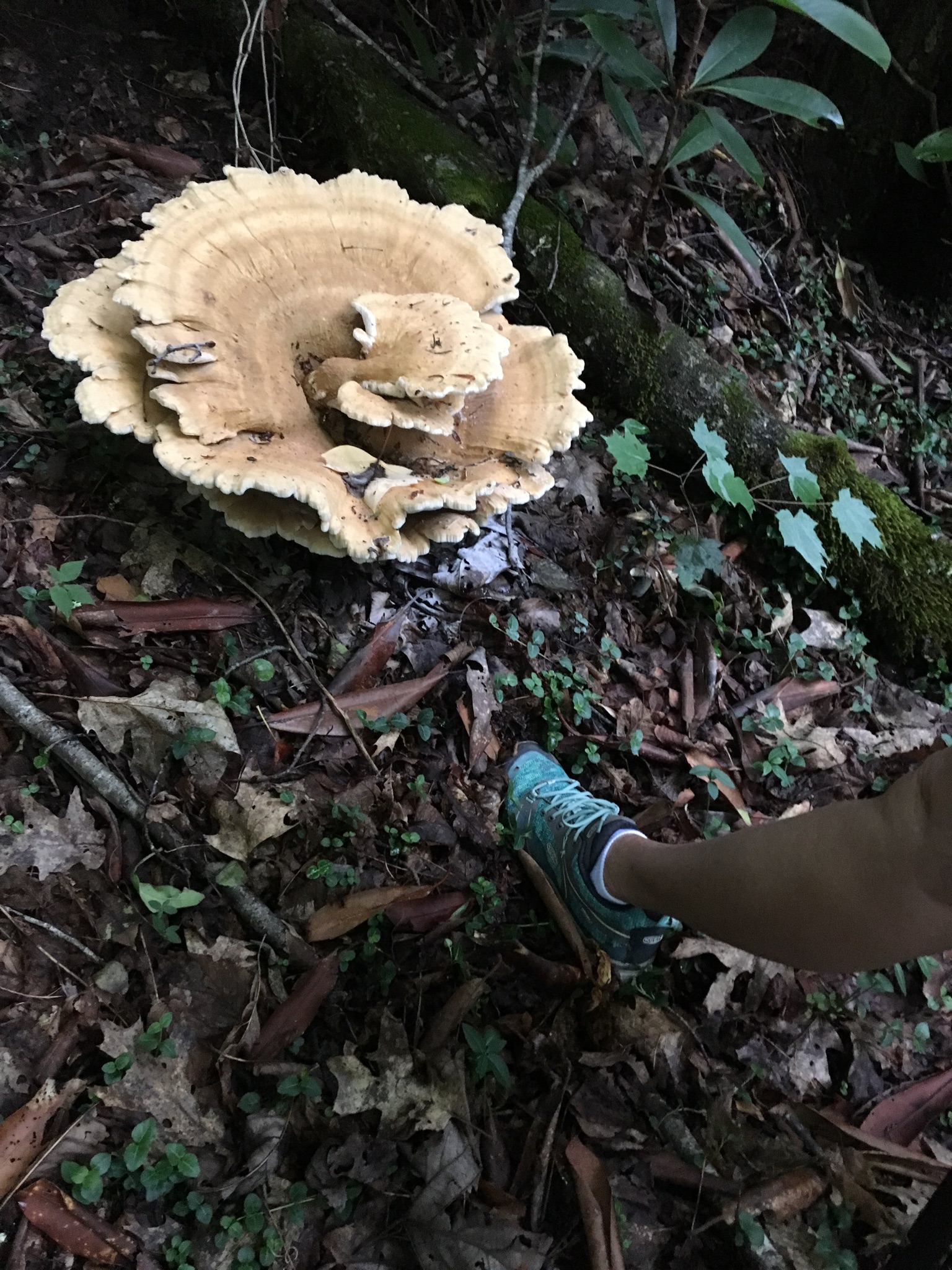
by Heidi Copeland | Jul 11, 2018
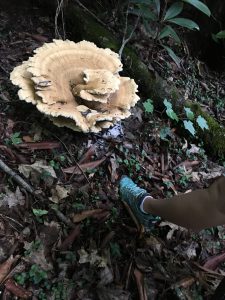
Never eat wild mushrooms – many are poisonous.
Photo source: UF/IFAS Northwest District
Here, there, and everywhere!
With all the rain of late, there seems to be an interest in mycology. You know, the fruiting body of fungi called mushrooms! Edible mushrooms in particular.
It is not unusual; our subtropical summer weather tends to make some fungi flourish! Moreover, apparently, there is a bumper crop of fungi this year. Phone calls to the University of Florida IFAS Extension office about eating mushrooms has increased. Individuals have even brought mushrooms to the office, inquiring if they are of the edible variety.
Our reputation as Extension Agents certainly would be damaged if we did not adhere to a few rules… always read a label, use research-based information, and NEVER tell anyone that a mushroom is edible. It is not that there are not delicious wild mushrooms out there; a recent July 2017 publication of Microbiology Spectrum estimates millions of species. However, even the scientists do not agree, as only about 120,000 of them have been described so far. Not all are edible. Some fungi are poisonous to the point of being deadly.
Dr. Matthew Smith, Assistant Professor in the Department of Plant Pathology, knows a lot about mycology. In fact, he also is curator of the UF Fungal Herbarium (FLAS), managed by the UF Department of Plant Pathology at the Florida Museum of Natural History in Gainesville. The Fungal Herbarium is a valuable resource; its collections have many important aspects, including information about fungi that are deadly poisonous to humans and pets when consumed.
In addition, the UF Fungal Herbarium is participating in a National Science Foundation-funded project to digitize and database as many US macrofungi collections as possible. This project (The Macrofungi Collection Consortium) includes 34 institutions in 24 states. The project began in July 2012 and will aim to capture data for roughly 1.3 million fungal specimens. Persons interested in visiting the fungal herbarium should contact Dr. Matthew Smith, trufflesmith@ufl.edu.
With that said, there is enough scientific research out there to conclude mushroom identification is indeed difficult. Many mushrooms look similar, but are oh so different!
If you are truly interested in eating what you forage, MAKE time to study with experts! Mushrooms you plan to eat that are not identified correctly could send you to the emergency room … or worse. The toxicity of a mushroom varies by how much has been consumed. Poisoning symptoms range from stomachaches, drowsiness, and confusion to heart, liver, and kidney damage. The symptoms may occur soon after eating a mushroom or can be delayed for six to 24 hours.
Delayed symptoms are common. Seek help immediately if you think you may have eaten a poisonous mushroom, even if there are no obvious signs of toxicity. Call the Poison Center’s 24-hour emergency hotline at 1-800-222-1222. You will receive immediate, free, and confidential treatment advice from the poison experts.
And if you are determined to make foraging for food a recreational hobby or even want to learn more about what is in your Florida yard, Common Florida Mushrooms by Dr. James Kimbrough, Emeritus Faculty, University of Florida’s Institute of Food and Agricultural Sciences, identifies and describes 268 species of mushrooms found in the Sunshine State.
Most importantly, teach your children to NEVER eat any mushroom picked from the ground. It is indeed better to be SAFE than sorry!

by Heidi Copeland | Jul 11, 2018

Enjoy a scoop of ice cream in honor of National Ice Cream Month.
Photo source: UF/IFAS Northwest District
In 1984, President Ronald Reagan declared July as National Ice Cream Month and the third Sunday in July (July 15, 2018) as National Ice Cream Day! Essentially, the entire month of July is supposed to be celebrated with “appropriate ceremonies and activities” involving ice cream! Ice cream is both nutritious and delicious – eaten in moderation, of course.
However, choosing ice cream can be confusing! Categorically, ice cream is included in the frozen dessert category of the frozen food industry. This category of foods comprises groupings such as regular and low-fat ice cream, frozen yogurt, sherbets, and other frozen sweet treats.
According to the International Dairy Foods Association (IDFA), FUN ice cream facts include:
- Regular ice cream is the most popular category of frozen desserts in the U.S.
- Low-fat ice cream is the second most popular category.
- The United States eats the second largest amount of ice cream per capita.
- The average American consumed 13 pounds of ice cream in 2016.
- Ice cream companies made more than 898 million gallons of regular ice cream in 2015.
- A typical serving size is ½ cup or a scoop about the size of a tennis ball.
What really is ice cream? Real ice cream or ice-cream is a frozen sweet made from dairy products, such as milk and cream, combined with flavorings and sweeteners, such as sugar. American federal labeling standards require ice cream to contain a minimum of 10% milk fat per 1/2 cup serving and 20% total milk solids by weight. A bit of air is slowly added to this slow-stirred mixture while chilling to prevent large ice crystals from forming. A term used in processing commercial ice cream is overrun. Overrun means the liquid dairy mixture, once completely chilled, can have expanded up to double its original volume by the incorporation of air. The addition of air (although not an ingredient on the label) results in a smoothly textured ice cream free from palpable ice crystals or sandiness.
Overrun (air) helps explain the vast price discrepancy between ice cream brands. Typically, the more expensive brands generally use more and better quality ingredients and have less overrun, whereas less expensive ice cream brands tend to use the minimum amounts of ingredients required by law and more overrun. In the U.S., ice cream is sold by volume… hence, the standard serving size of ½ cup.
There are so many variations to the basic ice cream recipe. When egg yolk solids are added to ice cream, the name has to reflect this. “Frozen custard” or “French ice cream” or “French custard ice cream” is ice cream with the added egg yolk.
Premium brand ice creams tend to use a higher than standard ice cream recipe with higher fat content and more expensive, better quality ingredients… and less air.
Ice-milk is no longer made. A 1994 change in rules allows ice milk to be labeled as low-fat ice cream. Low-fat ice cream, by law, must contain 50% or less fat than a similar food. Note that the law says nothing about calories. A light ice cream may be just as high in total calories as ice cream because of the addition of other ingredients.
Frozen yogurt, made from yogurt, is a dairy product, with the addition of various sugars and flavorings. However, yogurt’s reputation for being low in calories is not always accurate and, unlike ice cream, there are no federal standards of any kind for frozen yogurt.
Gelato is a type of soft frozen dessert containing a relatively small amount of air. This makes the product dense, rich, and creamy. Gelato can be made with milk, cream, various sugars, and flavoring such as fresh fruit. In the United States, there is no federal standard definition for gelato set forth by the U.S. Food and Drug Administration.
Are sorbet, sherbet, and sherbert all the same? Despite the fact that the legal definitions of sherbet and sherbert can be used interchangeably, sherbet/sherbert is a frozen fruit and dairy product that contains anywhere from 1-2 percent milk fat from milk or cream and 2-5 percent total milk solids. On the other hand, sorbet generally implies a fruit-based frozen dessert with little to no dairy (but may contain egg white). The term sorbet is an unregulated industry standard. However, the industry wants them free from surface crustation, brittleness, syrup bleeding, and large ice crystals.
Confused yet? The frozen dessert market continues to evolve with novelty-frozen inventions made with nondairy to mimic ice cream. Welcome, delicious dairy-free almond, coconut, cashew and soymilk frozen desserts. Notice, these products are not called ice cream but non-dairy frozen desserts. Nevertheless, they are so smooth, creamy, and delicious, you might not even notice.
In 1984, when President Reagan crafted the amusing proclamation to eat ice cream, folks didn’t have SO much to choose from. You do! Enjoy a frozen treat but know what you are buying. Not all frozen treats are in fact ice cream! When you are reading nutrition labels, it is important to look at the whole picture. You can learn a lot from a label!

by Judy Corbus | Jul 10, 2018

Check your air conditioner filter monthly and replace when dirty.
Photo Source: UF/IFAS Northwest District
When the temperature is in the 90s and the heat index in the triple digits, you certainly don’t want your air conditioner to conk out! Follow these simple steps to keep your AC running efficiently and to save money on your electric bill:
Check the filter monthly. Your air conditioner’s filter catches dust, dirt, and allergens to keep your home cleaner. During periods of high use, like summer, a lot of air passes through the filter so it can become dirty more quickly. If you live in a dusty area or have pets, these, too, can “fill” your filter so be sure to check your filter monthly and clean or change it as needed. Some filters are washable and reusable, such as in window unit air conditioners. To clean, turn off the unit and remove the filter. Wash in warm, soapy water and allow to air dry; reinstall in unit. Replace the filter if it is worn or torn. Inspect and replace window seals to prevent cool air leaks.
Central air conditioning systems typically use disposable filters. Turn off the system to prevent dust and dirt from entering the unit while you are cleaning it. Open the intake grate and remove the filter. Hold the filter up to a light; if you see very little light through the filter, replace it. Make sure to install the new filter so the air flows in the direction indicated by the arrow on the filter frame. Also, dust the grate with a soft cloth. Use the filter type recommended by the manufacturer for best performance; keep a supply on hand so you can change them regularly. Pick a day of the month, such as the 1st or when you receive your electric bill, to check the filter. This also is a good time to dust your ceiling fan blades.
Does a clean filter make a difference? A clogged filter makes your air conditioner work harder to pull air through the filter. Many of the newer air conditioning units now have a safety feature that shuts down the unit if air cannot pass through the filter to prevent the compressor from overheating. When this happens, a service technician must inspect and reset the unit, resulting in a service call charge. Getting in the habit of checking and changing your filters regularly will keep your unit operating efficiently and extend its usable life. You can reduce your air conditioner’s energy consumption by 5 to 15 percent by maintaining clean air filters (www.energy.gov).
Clean leaves and other debris from the fan, compressor, and condenser. Trim shrubbery so it is at least two feet away from the outside unit to allow for proper air flow.
Check and clean the evaporator coil every year.
Use a “fin comb” (available at hardware stores) to straighten bent coil fins.
Twice a year, insert a stiff wire through the drain channels to clear and prevent clogs, which can lead to backups and flooding.
Have your air conditioner serviced at least once a year. Spring is an ideal time to have a qualified service technician inspect and service your unit so it can handle the demand of the hot summer months.
Keep your “cool” this summer with these maintenance tips!
For more information, visit:
Energy Saver 101: Everything You Need to Know About Home Cooling
Florida Energy Systems Consortium
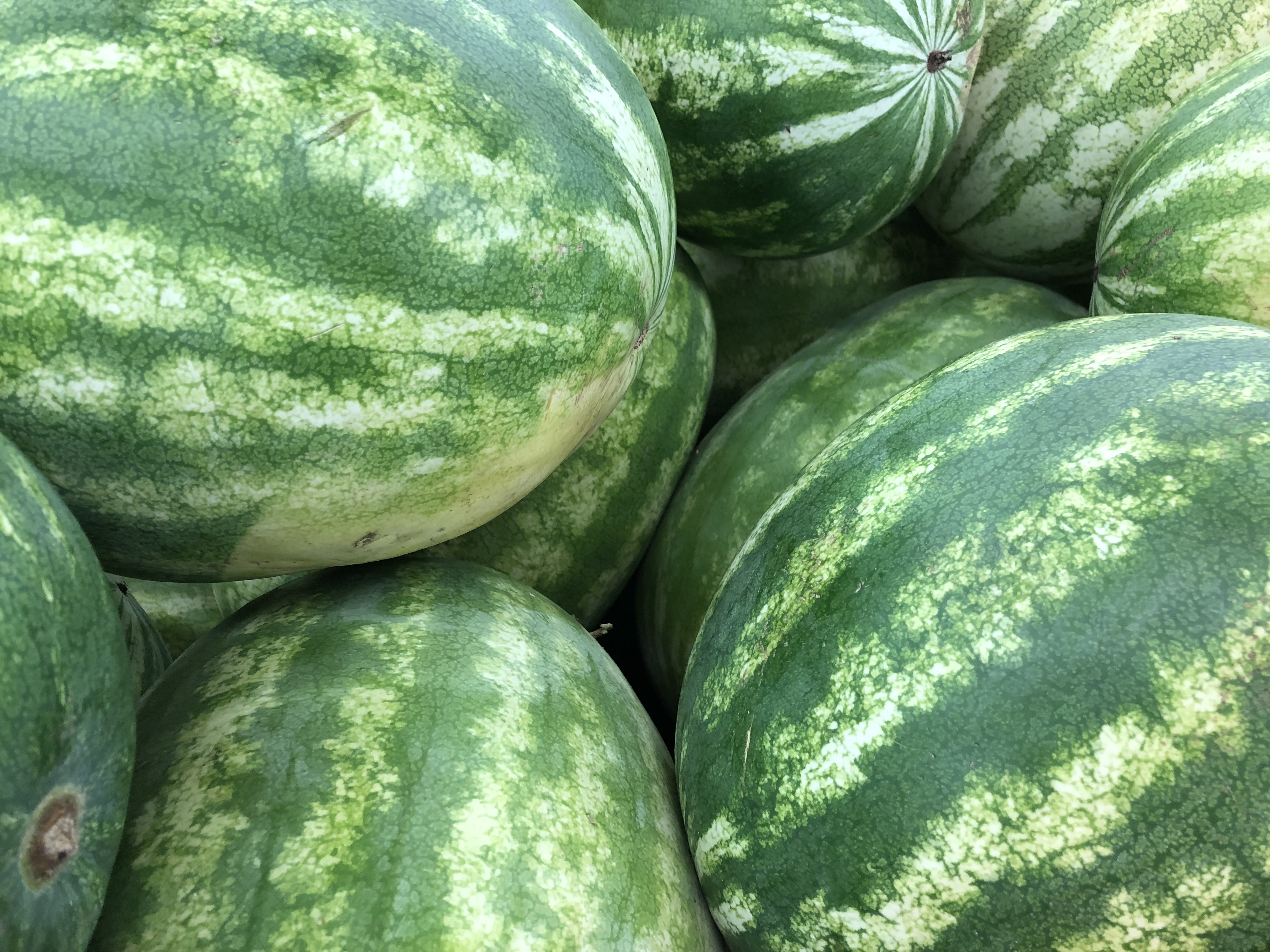
by Melanie Taylor | Jul 8, 2018
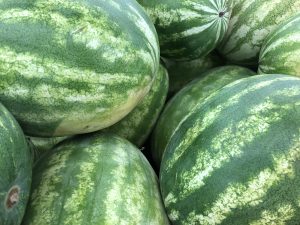
Watermelons are nutritious and help to keep you hydrated.
Photo source: UF/IFAS Northwest District
We tend to think of watermelon as a summer fruit and that is because in Florida, you can find watermelons growing from late spring through mid-summer. “Fresh From Florida” watermelons are available in stores and roadside markets from April through July. Time is running out this summer to have a fresh Florida watermelon, so be sure to get them soon.
Why is watermelon such a popular fruit? One, it is in high abundance during the summer and can be found in most stores. Watermelon also tends to appeal to those with a “sweet tooth,” but it’s still healthy. Red watermelon is a good source of lycopene, which gives watermelon its color (and tomatoes, too). Lycopene is an antioxidant that helps protect the body against heart disease, inflammation, and some cancers.
Watermelon also is a good source of vitamin C and contains vitamin A. Vitamin C is an antioxidant, helping to protect cells from the damage caused by free radicals. Free radicals are compounds formed when our bodies convert the food we eat into energy. People also are exposed to free radicals in the environment from cigarette smoke, air pollution, and ultraviolet light from the sun. The body also needs vitamin C to make collagen, a protein required to help wounds heal. In addition, vitamin C improves the absorption of iron from plant-based foods and helps the immune system work properly to protect the body from disease. Vitamin A is important for normal vision, the immune system, and reproduction. Vitamin A also helps the heart, lungs, kidneys, and other organs work properly.
Probably most impressive is that watermelon is fat free, sodium free and cholesterol free, so we all should feel good about eating it. In addition, as the summer heat continues to increase, we need to drink more water to stay hydrated. Well, watermelon is 92% water, so eating it is an additional way to hydrate. In fact, early explorers used watermelons as canteens.
Here is a technique to know you have chosen a ripe watermelon. Ripe watermelons have a yellow or cream-yellow “ground spot” where the melon rested on the soil. If this spot is green or white, the watermelon probably is not ripe. In addition, once you have selected a ripe melon, a whole watermelon will last in the refrigerator for up to a week.
Before cutting your watermelon, be sure to wipe it with a clean cloth and light, soapy water and then rinse it off. This will prevent you from dragging any bacteria, etc. on the skin through the fruit as you slice it. Once cut, the melon should be kept refrigerated and covered with plastic wrap. If the watermelon flavor is not quite what you expected, you can enhance the flavor by adding a squeeze of lemon juice, honey, or chopped mint.
Be sure to excite your taste buds this summer by biting into a cold, sweet, juicy slice of watermelon. Feel confident in selecting your ripe watermelon and enjoy it, knowing you have made a healthy choice in your food selection.
A Few Fun Facts: (www.freshfromflorida.com/farmtoschool)
- Watermelon seeds are a good source of healthy fats and protein, which help your muscles grow.
- Florida leads the United States in watermelon production.
- Watermelons have been in production since around 2000 BCE.
- Seedless watermelons have been growing in the United States for over 40 years.
- Some countries, like Japan, grow square watermelons.
- Watermelons can have up to a thousand seeds, which can be black or white.
- As it matures, the watermelon’s insides transform from white to red or pink.
- You can eat the crunchy rind and seeds of a watermelon.
- According to John Mariani’s The Dictionary of American Food and Drink, the word “watermelon” first appeared in English dictionaries in 1615.
- Watermelon is the most consumed melon in the United States.
Resources:
Florida Department of Agriculture and Consumer Services
Fresh From Florida
Florida Farm to School
Living Healthy in Florida

by Melanie Taylor | Jun 23, 2018

Always supervise children closely around water.
Photo credit: Marie Arick
Summer is here! As the long, hot days of summer move forward there are many things to consider when it comes to children and water safety. Each summer we hear of tragic incidents of children drowning in pools, spas, and other bodies of water. These tragedies may be avoided by following a few simple tips to keep your child safe while letting them enjoy their summer break.
The U.S. Consumer Product Safety Commission (CPSC) is the agency charged with protecting the public from unreasonable risks of injury or death from thousands of types of consumer products under the agency’s jurisdiction. In addition to Pool and Spa Safety, the CPSC is committed to protecting consumers and families from products that pose a fire, electrical, chemical, or mechanical hazard. CPSC launched the campaign, PoolSafely.gov, which provides Pool Safely: Simple Steps to Save Lives, a national public education campaign to reduce childhood drownings, submersion injuries and entrapments. Review these tips below.
Tips from PoolSafely.gov and CPSC:
- Never leave a child unattended in or near water.
It is recommended to designate an official “Water Watcher”, this is an adult assigned with supervising the children in the water. This should be their only task – they should not be reading, texting or playing games on their phone. Have a phone close by at all times, in case you need to call for help, and if a child is missing, check the pool first. Even when a lifeguard is present, parents and caregivers should still take the responsibility of being a designated “Water Watcher”. When the lifeguard chair is empty, the other lifeguards may not be able to see the entire pool and when lifeguards are sitting in low chairs; other people in the pool can block their view.
- Teach children how to swim.
Swimming is fun, great exercise and it is a lifesaving skill, so why would you not instill this skill in your child? Be sure to enroll children in swimming lessons – the earlier the better. A few swimming lessons may just save their life.
- Teach children to stay away from pool drains.
Show your children where the pool drain is located and remind them of the dangers of those drains. Remind them not to play or swim near drains or suction outlets, especially in spas and shallow pools, and never enter a pool or spa that has a loose, broken or missing drain cover. Sadly, children’s hair, limbs, jewelry or bathing suits, etc. can get stuck in a drain or suction opening. When enjoying time in a spa, be sure to locate the emergency vacuum shutoff before getting in the water.
- Ensure all pools and spas – both in your backyard and any public pool you may visit – have compliant drain covers.
The powerful suction from a pool or spa drain can even trap an adult, let alone a child. The Pool and Spa Safety Act is named after Virginia Graeme Baker, a child that tragically died from drowning due to a suction entrapment from a faulty drain cover. Do to this act, it is now required by law that all public pools and spas must have drain grates or covers that meet safety standards to avoid incidents like the one that took Graeme’s life.
- Install proper barriers, covers and alarms on and around your pool and spa.
One of the biggest dangers with pools or spas is when they are left open without any proper fences, barriers, alarms and covers. Each of these can be lifesaving devices. A fence of at least four feet in height should surround the pool or spa on all sides and should not be made of a climbable material. The pool should only be accessible through a self-closing, self-latching gate. Teach children to never climb over a pool gate or fence. Always remove portable pool ladders when not in use, just so your child is not enticed to enter the water. It is also highly recommended to install a door alarm from the house to the pool area, and keep pool and spa covers in working order.
- Know how to perform CPR on children and adults.
CPR can be the reason a drowning victim survives. With all of the possible locations of CPR trainings, why not get CPR certified as an extra precaution in case there is a water emergency? CPR classes are available through many hospitals, community centers, or by contacting your local American Red Cross. Once certified, be sure to keep the certification up to date.
- Finally, take the Pledge!
Before heading to the water with your family, remember to take the Pool Safely Pledge. This online call to action is a reminder to stay safer around the water. This pledge for you and your child can be found at https://www.poolsafely.gov/pledge/. The pledge is supported by CPSC and the PoolSafely.gov initiative and Olympic swimmer Michael Phelp along with over 60,000 other pledge takers. Parents, you can also download coloring sheets and other fun PoolSafely.gov child friendly apps and songs.
With the large variety of water related summer activities available it does leave a chance for risky incidents. Some work and preparation ahead of time will make for a less anxious and more fun-filled summer. Planning for risk will lessen the high-risk stakes and make sure everyone is prepared in case of an emergency. So remember, Simple Steps Save Lives. Enjoy a safe, fun, and water filled time this summer!
Resources: For more information be sure to visit Pool Safely: Simple Steps Save Lives – https://www.poolsafely.gov
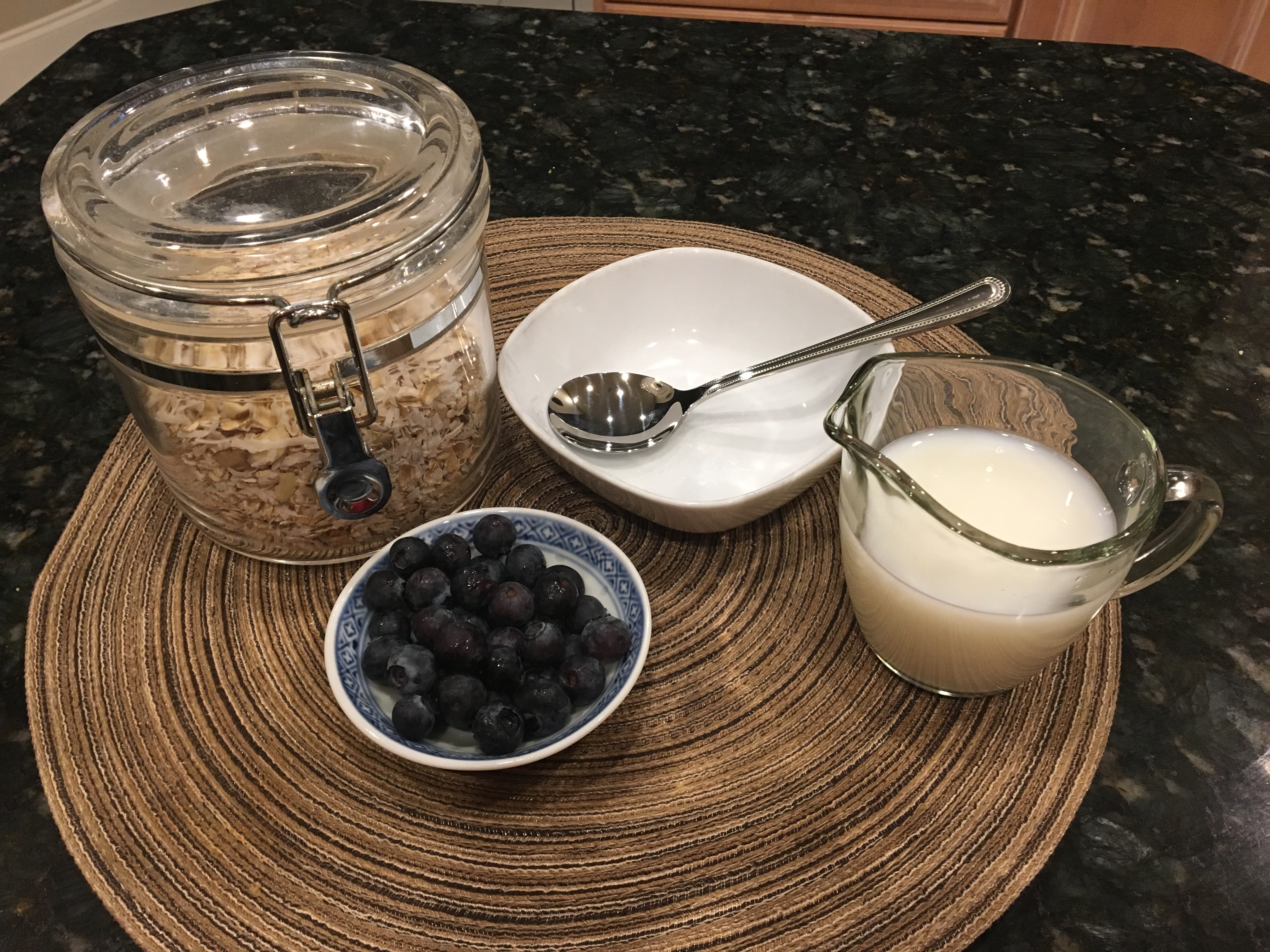
by Pam Allen | Jun 23, 2018
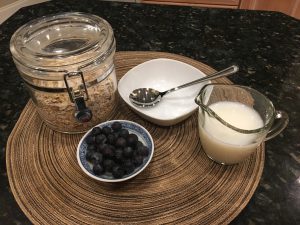
Start Your Day with Whole Grains Photo Source: Pamela Allen
Don’t let the heat of the summer months deter your path to a healthy diet. Stay focused and take small steps that can make a difference in your health. Breakfast is an important part of a healthy diet. Most of us struggle with what to have on hand that is quick, healthy and gets us on track for our daily intake of healthy food. Start your day right by eating whole grains.
The two types of grains are whole and refined. Grain products include bread, pasta, cereals, rice, corn, oatmeal and barley. The United States Department of Agriculture (USDA MyPlate) recommends that people of all ages get half their grain servings from whole grain sources. How do you determine what is whole grain and what is refined? Read the food’s Nutrition Facts label and know the symbol for whole grains. The “Whole Grain Stamp” is a visual symbol placed on the label that identifies foods approved by the Whole Grains Council. Also look at the list of ingredients and if whole grains are listed first, it is a good source of whole grains. Remember that ingredients are listed from most to least so whole grains should be up in the top part of the ingredient list to be beneficial.
Whole grains provide a good source of fiber and B vitamins. Fiber is the carbohydrate that is non digestible. Fiber keeps our digestive system regular and also can help reduce blood cholesterol. A good goal for women is to consume 25 grams each day while men need 38 grams for their daily intake. For specific recommendations visit https://www.choosemyplate.gov/ . Other sources of fiber include fruits and vegetables, seeds, nuts, and beans.
So now back to breakfast, the first meal of the day. Making your own cereal can be healthy and nutritious. Start with a whole gran like oats. This is the base for homemade granola and also can be cooked as a hot cereal. Try this homemade granola recipe to have available for a whole grain option for breakfast.
Homemade Granola
2 cups of old fashioned whole grain oats
½ cup sliced almonds or other nut like pecans or walnuts
½ cup shredded coconut
2 Tablespoons of Maple Syrup or honey
1 Tablespoon of melted coconut oil to coat the oats (can be melted in the microwave for 10 seconds)
¼ teaspoon of vanilla extract
Optional: ½ cup sunflower seeds, ½ cup of dried fruit
Directions
Preheat the oven to 300º F.
Combine all ingredients in a large bowl. Mix well and toss to coat.
Spread the mixture in a thin layer on a baking sheet lined with parchment paper and bake for 10 – 15 minutes, until very lightly toasted. Allow to completely cool before storing.
Granola can be kept in an airtight container in a cool, dry place for up to 2 weeks.
To use as a morning cereal, scoop ¾ cup and cover with Milk. For added flavor and fiber, add fresh fruit like blueberries or strawberries. May also be eaten as a snack or a topping for yogurt sundaes.
For information about upcoming UF IFAS Extension programs in Okaloosa County, visit our website at:
http://sfyl.ifas.ufl.edu/okaloosa email: pha@ufl.edu or call us at 850-689-5850
“An Equal Opportunity Institution”












